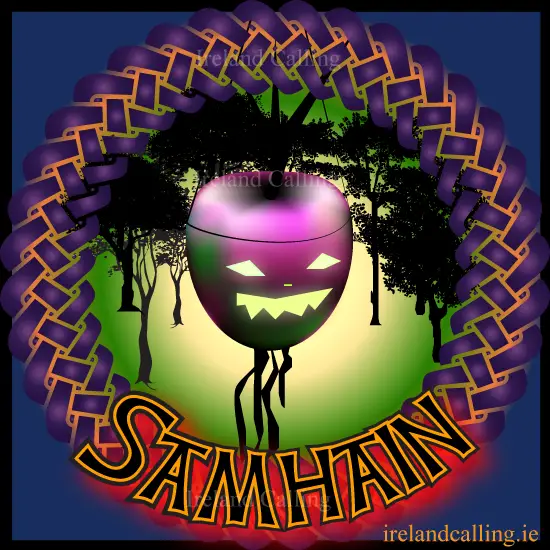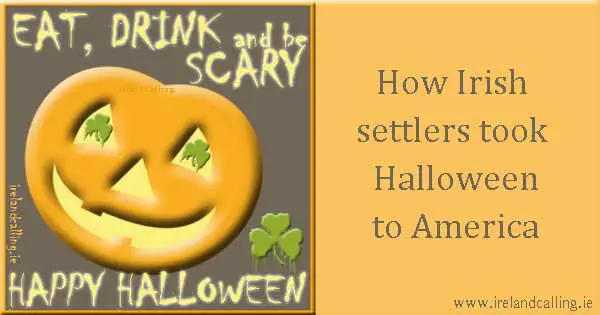Sunset October 31st – November 1st
Summers-end Now Halloween, All Saints Day
Samhain, pronounced Shah-vin, sow-een or sav-wen, depending on your place of origin, is the celebration of the end of the harvest or the summer’s end.
Buy great Celtic festival graphics in our print store
It was a time to take stock of the food supplies. The vegetables and herbs were stored, cattle were brought down from their higher summer grazing lands and livestock were slaughtered for the long cold winter ahead.
The seasonal change was celebrated with a big feast and usually two great bonfires. Cattle were ceremonially walked between the fires as a cleansing ritual and when slaughtered, their bones would be engulfed by the flames. This is where the word bonfire comes from, literally, a fire of bones.
It was thought to be a time when the door to the Otherworld was opened allowing the souls of the dead to walk freely between worlds and join us in ours. They were even invited to the feast with a place at the table laid out for them. However, mischievous fairies and evil spirits could also come through and people used to disguise themselves as a form of protection from these malevolent beings. It is possible that this practice evolved into the modern tradition of fancy dress on Halloween.
Samhain became linked to the Christian festival of All Saints Day in the 9th century when the Christians changed the date from mid-May to November 1st, coinciding with the pagan celebration and integrating with local culture. This was also known as All Hallows’ Day, preceded by All Hallows’ Eve, now known as Halloween.
Many of the old customs relating to Samhain and All Saints Day can be recognised in the modern Halloween night traditions.
Offerings of food were left on doorsteps to appease the fairies and spirits and people would also go door to door collecting food and firewood for the annual feast, most likely the source of the idea of trick-or-treating.
Lanterns used to be carved out of turnips as a way to light the way in the night and to represent the Otherworldly beings as a form of protection. Today, pumpkins are carved as a Halloween ritual in some areas.
Discover the history of Halloween in America
How Ireland protects its harp and shamrock emblems…take care if using them
Why the Guinness harp faces the opposite way to the official Irish harp


